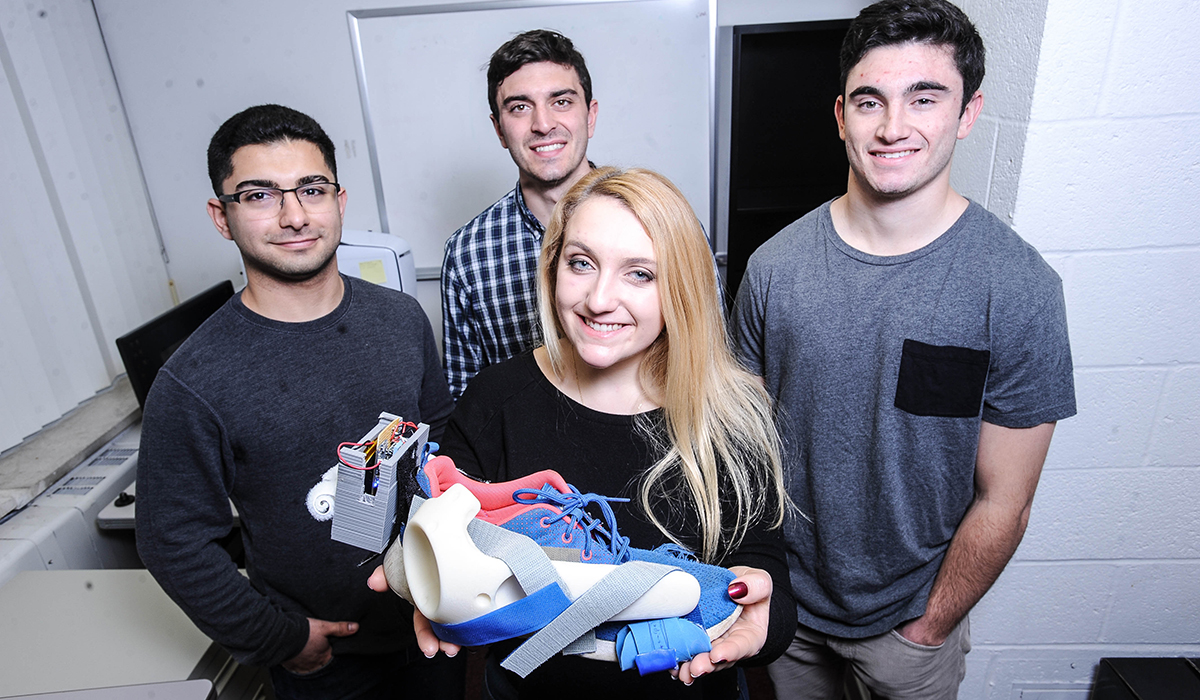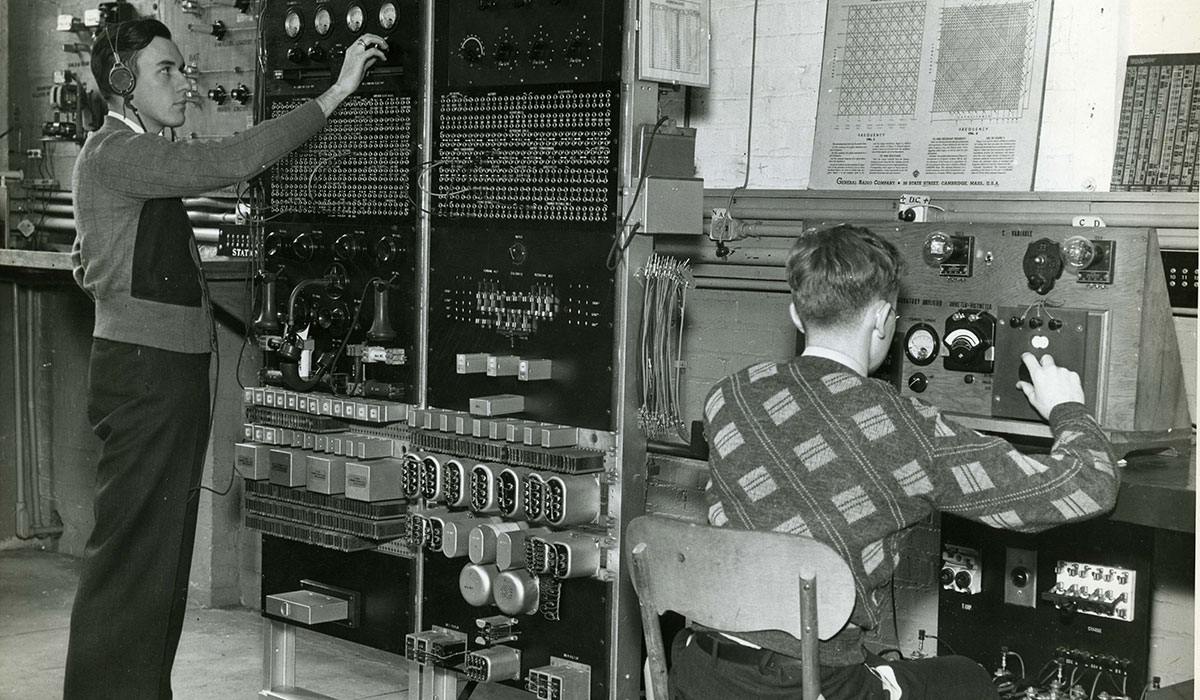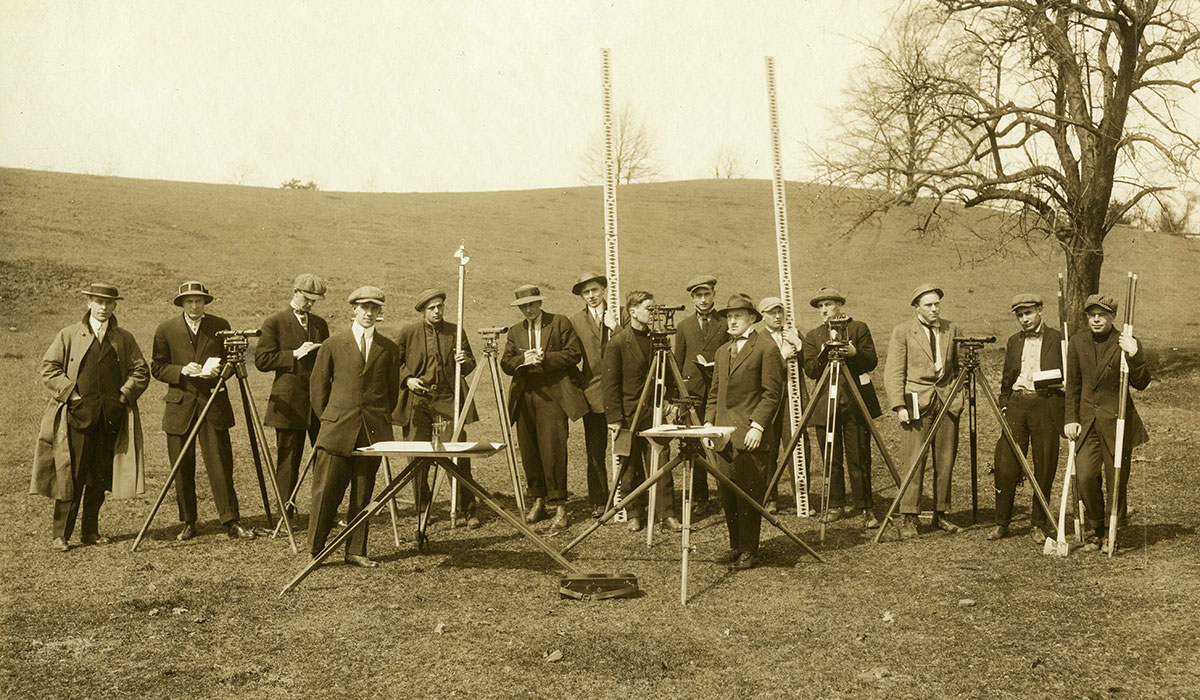On-the-Job Experience Benefits Engineering Students
Thanks to their internships, engineering students have a clearer understanding of where their careers might take them.
Learn More
The need for instruction and research in engineering was recognized by The Catholic University of America’s first rector, Archbishop John Joseph Keane, and an engineering program was established in 1896. Early faculty conducted pioneering work in aeronautics – Mechanics professor Dr. Albert Zahm was a long-time advisor to the Wright brothers – and constructed the first wind tunnel on any university campus in the nation. When the University began admitting undergraduate students in 1904, the very first such student to arrive on campus, Frank A. Kuntz, came to study aeronautical engineering (and went on to be president of the first graduating class of 1907).
In 1930, the School of Engineering was formally established, under the leadership of its first dean, Dr. Hardee Chambliss, and was soon renamed the School of Engineering and Architecture. In the 1950s, the University established one of the nation’s first nuclear science and engineering programs, and in 1957 installed a nuclear training reactor with a grant from the Atomic Energy Commission. The School moved into its current home, Pangborn Hall, in 1962. Throughout the cold war, Catholic University faculty and students made important contributions to research supporting national defense, including in acoustics, electronics, fluid mechanics, aviation, and the exploration of space. Dr. Chieh-Chien Chang, a prestigious Chinese American scholar at Catholic University in the 1960s and 70s, laid the foundation for the University’s long-term partnership with NASA.
In 1992, the name was shortened to the School of Engineering, as the architecture department was separated into a new School of Architecture and Planning. The 1990s also saw the creation of one of the earliest Biomedical Engineering departments in the country, building on seminal work in biomechanics and the dynamics of the circulatory system done by Catholic University faculty. In the early 2000s, the University’s computer science program was incorporated into the School and joined with electrical engineering to form the Department of Electrical Engineering and Computer Science. In 2025, the School of Engineering was restructured and renamed the College of Engineering, Physics, and Computing. This change reflected the establishment of the Department of Computer Science and the integration of the existing Department of Physics.
Today, the College of Engineering, Physics, and Computing offers 9 undergraduate majors, 11 master’s degrees, and 9 doctoral programs, as well as several undergraduate minors and graduate certificate programs. The College prides itself on being a small, Catholic institution that provides quality education with a personal touch. Students can expect close interaction with faculty who are dedicated to teaching and research. All members of the full-time faculty hold doctoral degrees and conduct research programs that support the College’s educational mission while advancing the frontiers of engineering, physics, and computer science. Our location in Washington, D.C. provides a wealth of opportunities for exploration, education, collaboration, and recreation.

Thanks to their internships, engineering students have a clearer understanding of where their careers might take them.
Learn More
